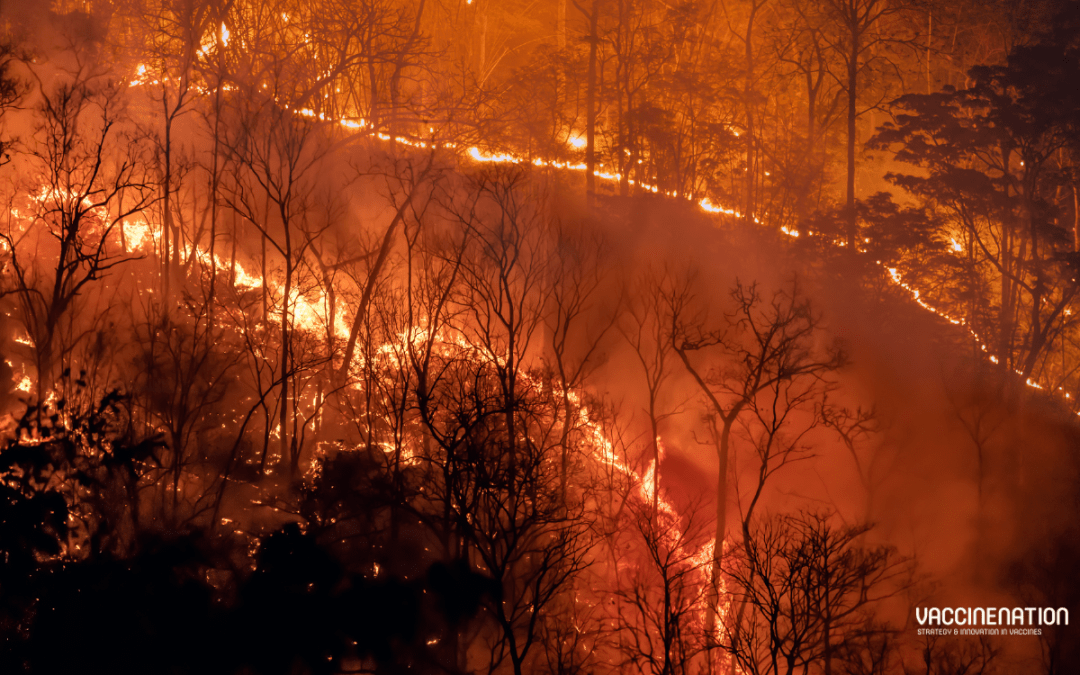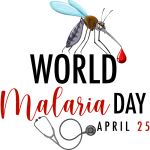In May 2024, WHO shared that its Task Team on Climate Change, Neglected Tropical Diseases (NTDs), and Malaria, has issued a scoping review in partnership with Reaching the Last Mile (RLM). The review suggests that we have insufficient understanding of the “actual and potential” impacts of human-induced changes to climate patterns on malaria and NTDs. Published in Transactions of the Royal Society of Tropical Medicine and Hygiene, the paper highlights that changes in prevalence, incidence, range, and intensity of diseases may be felt most keenly by communities that are already disproportionately experiencing them.
Human change has human consequences
The authors state that humans are “driving incremental changes in climate patterns globally” with actions such as coal, oil, and natural gas burning, deforestation, and intensified agriculture. The increased concentration of greenhouse gases is “driving mean global temperatures upwards”, resulting in rising sea levels, rainfall changes, and increased extreme weather events.
“Climate change will perturb human health in profound and long-lasting ways, both directly and indirectly.”
There is “already empirical evidence” that climate change has amplified “more than one-half of all known human infectious diseases”. The burden of this is likely to be disproportionately borne by the “poorest people”, and understanding the effects that climate change might have on the epidemiology of malaria and NTDs is “critical to minimising their health implications”. Thus, the paper explores current predictions of the effects of “historical and future climate change” on malaria NTDs, and how climate change mitigation and adaptation strategies might relieve these effects.
The research involves papers published between January 2010 and October 2023. Of 42,693 retrieved records, 1,543 full-text papers were assessed. 511 papers met the inclusion criteria, with 185 featuring malaria, 181 dengue and chikungunya, and 53 leishmaniasis. The authors comments that “other NTDs were relatively understudied”.
Review findings
“A distinct feature of the climate crisis is the pace of change in underlying global ecosystems. This generates uncertainty about the future epidemiology of multiple diseases: not only those that have historically manifested as epidemics, but also those formerly considered as stable and endemic, and those being driven towards elimination or eradication.”
The authors state that climate change will “simultaneously reshape the epidemiology of many non-infectious disease, threaten health infrastructure, affect the health workforce, and alter other foundational determinants of human health”. Diseases like malaria and “many NTDs” have “relatively complex” life cycles, with “multiple points of exposure to ecological, biological, and social systems.
The review highlights that potential outcomes relating to malaria, dengue and chikungunya, and the leishmaniases were the most studied. However, even for malaria, long-term projections remain “inadequate for robust planning”. For arboviral NTDs, dengue and chikungunya, the “current surge” is predicted to continue. Global expansion of the population at risk of the leishmaniases “seems likely”.
For NTDs that were grouped as “non-vector-borne”, the authors find “limitations in our capacity for prediction” that emerge from “gaping deficiencies in our understanding of disease transmission at steady state”.
“Gaps in our knowledge have lingered because funding for research on NTDs is thin and spread across a very large number of pathogens.”
In combination with disease-specific uncertainty there are uncertainties about future climate scenarios and their secondary effects. The authors claim that these are “further clouded by our joint hope” for behaviour change. Thus, decadal projections of future NTD prevalence or incidence “feel ill-advised”. However, without these projections, NTDs will likely continue to suffer “limited attention”: better understanding is “precisely what is needed now”.
Recommendations
Recognising the limitations of their review, the authors offer “some general conclusions and recommendations”. They suggest that there will be changes of “two kinds”: diseases will move around, and where endemicity is constant, there will be local increases or decreases in incidence or prevalence.
“There is a pressing need to safeguard previous global health gains by scaling up proven interventions and achieving impact before future changes render those interventions ineffective.”
The paper also demands reinforcement and regular reviewing of surveillance and intervention systems.
“Integrated surveillance and intervention systems, covering multiple diseases and taking a One Health approach, could offer efficiencies.”
Communities should be “consulted and involved” in these reviews of the surveillance and intervention systems and in research at the interface of infectious diseases and climate change. This will “maximise the relevance of such efforts” in the face of changing human populations. Another concern is “integrating climate resilience into health systems”, which should encompass health infrastructure investment, fostering cross-sector collaboration, adapting to the needs of displaced populations, improving access to health products, and accelerating research and development to address known gaps.
“We do not know enough.”
The review concludes with a “deepened sense of foreboding over the adverse influence that we as a species are visiting on our planet and its most vulnerable”. However, the is an “emerging opportunity to correct this inequity” in financial commitments to NTD control and elimination.
“Allocation of these resources should be guided by informed scenario analyses of current and future disease burden. The work described in this review is a start; convening stakeholders globally to advance the research agenda must be our next collective move.”
Responses to the review
Dr Ibrahima Socé Fall, Director of WHO’s Global NTD Programme, led the study, and identifies the need for “more comprehensive, collaborative, and standardised modelling” to facilitate better understanding and prediction of the effects of climate change on these diseases
“This important and timely review reveals alarming trends and is a call to urgent action. Malaria transmission is likely to shift both polewards and to higher altitude, while the mosquito vector responsible for transmission of dengue and chikungunya is predicted to continue to expand its range. If we are to protect and build upon the hard-won victories of the past two decades, the time to mobilise is now.”
Reaching the Last Mile’s Chief Strategy Officer, Tala Al-Rahami, is concerned that the climate crisis could “reverse decades of progress in global health and development”.
“Greater investment in research is urgently needed to support the development of timely and evidence-based interventions, and to allow us to anticipate and mitigate the worst consequences of climate change on human health.”
Dr Daniel Ngamije Madandi, Director of the WHO Global Malaria Programme, reflected that the consequences of extreme weather events on malaria are “only predicted to become more commonplace”.
“The paper provides a clarion call for mitigation and evidence responsive adaptation to climate change. As the impact of climate change is likely to be disproportionately borne by the poorest people, who are disproportionately affected by malaria and NTDs, a more equitable, comprehensive, and sustainable response is needed.”
For more insights into climate change and global health, why not subscribe to our weekly newsletters here?





